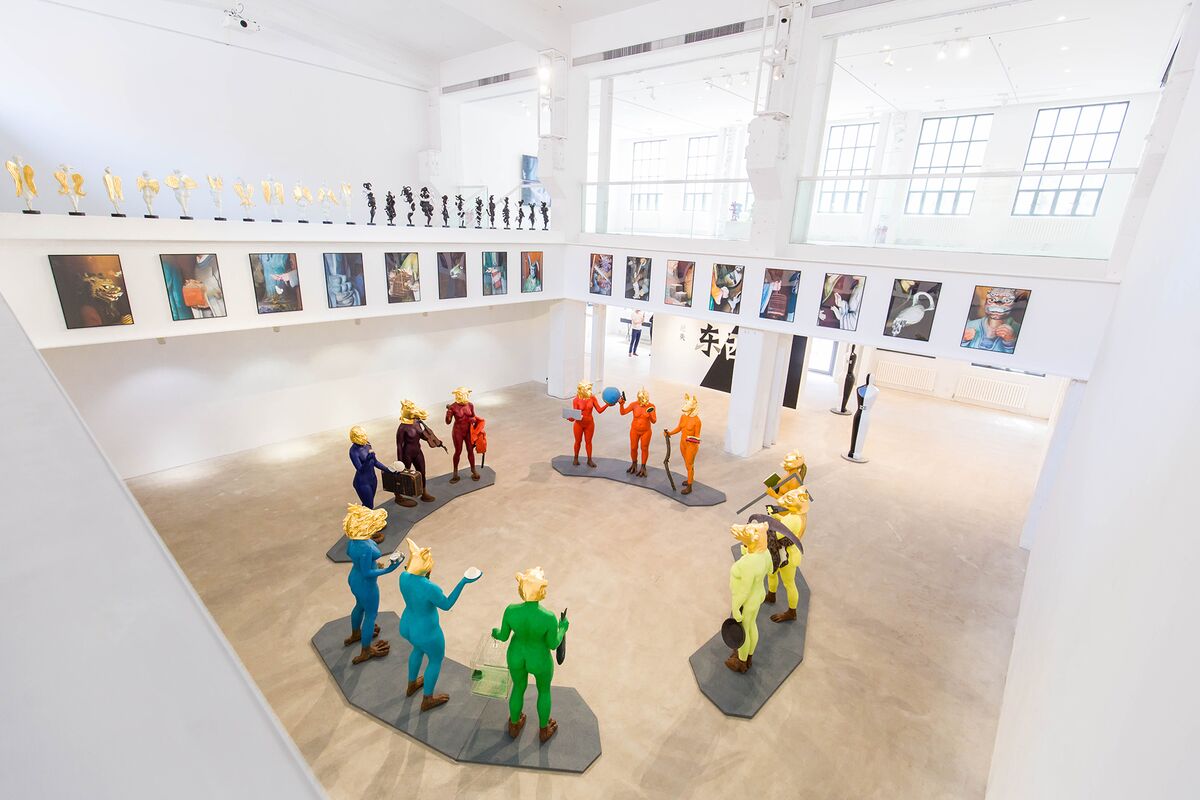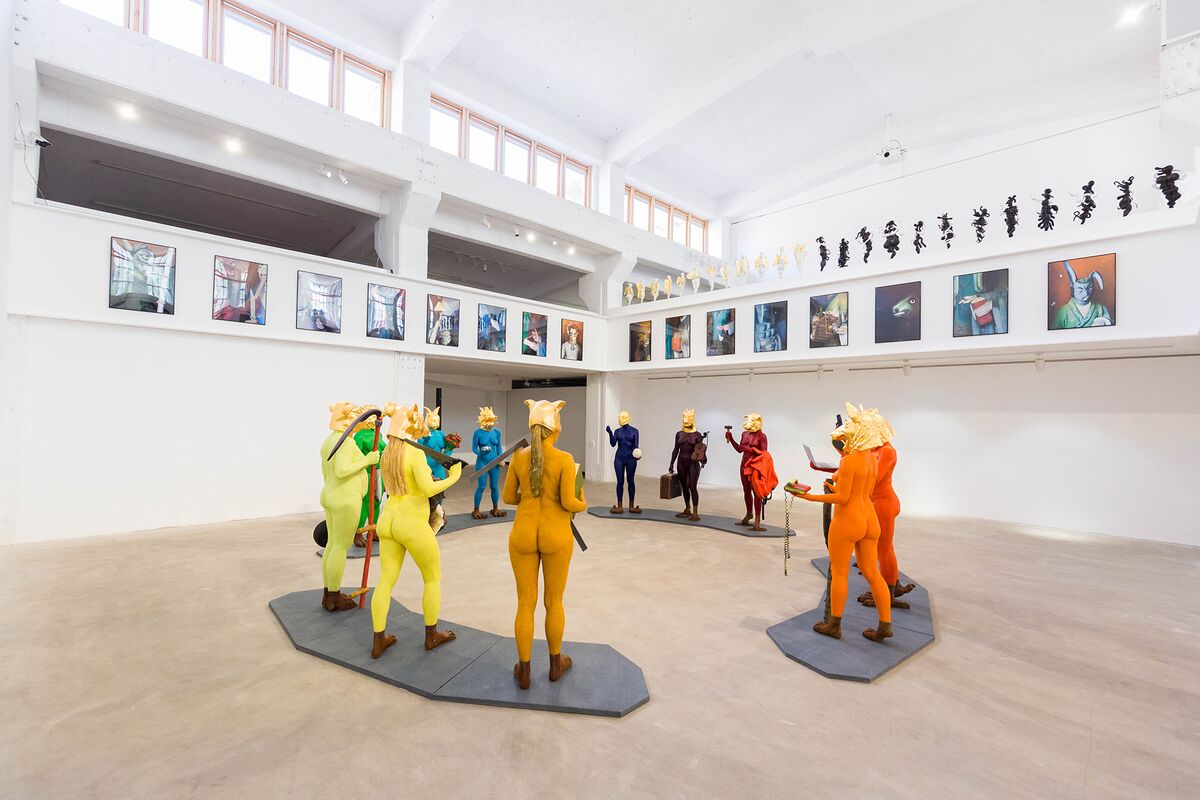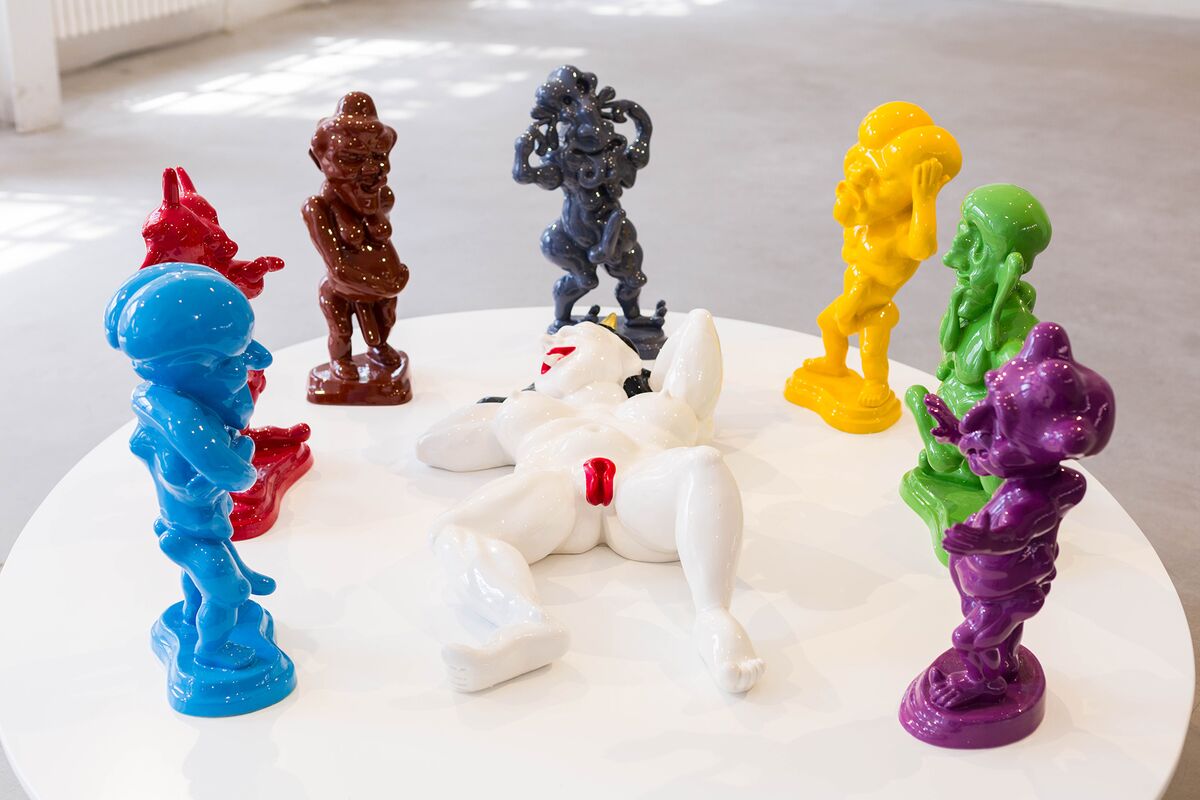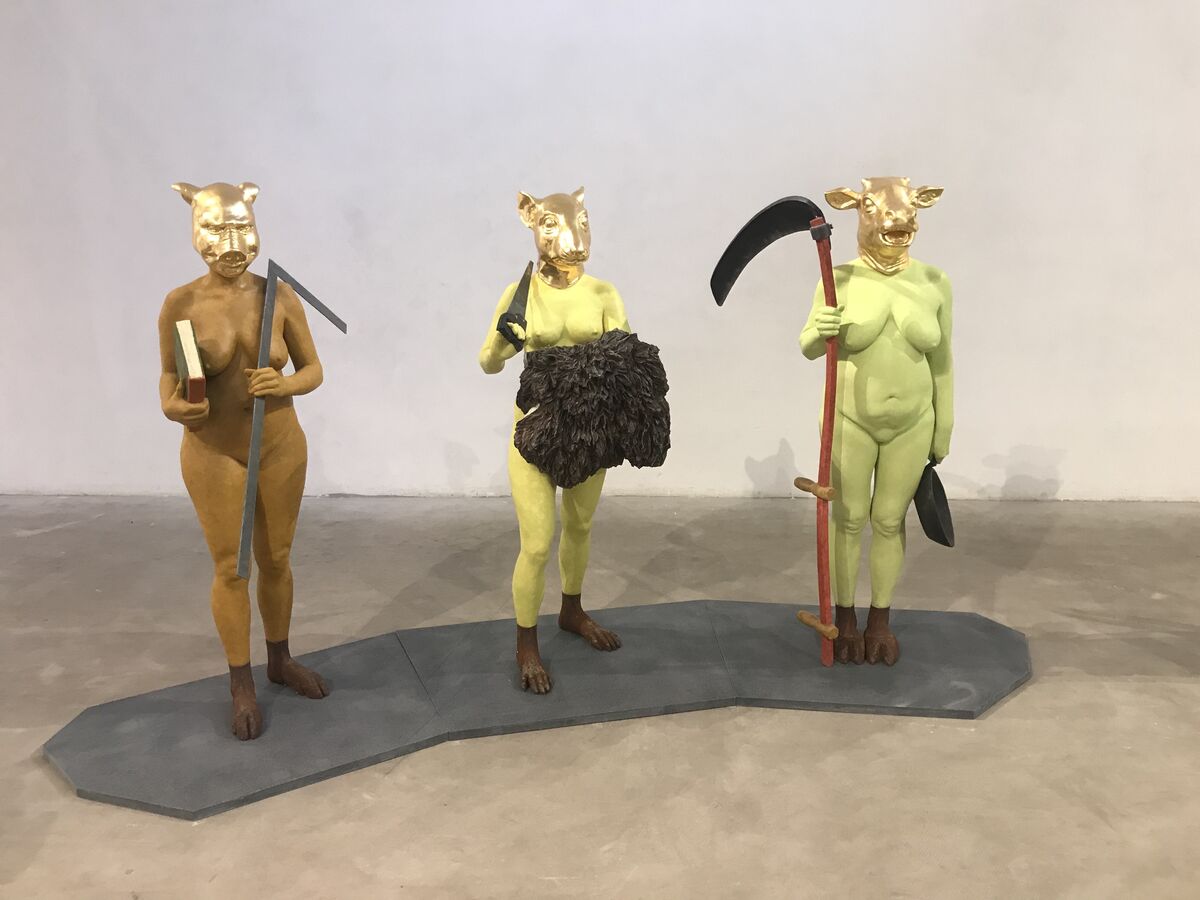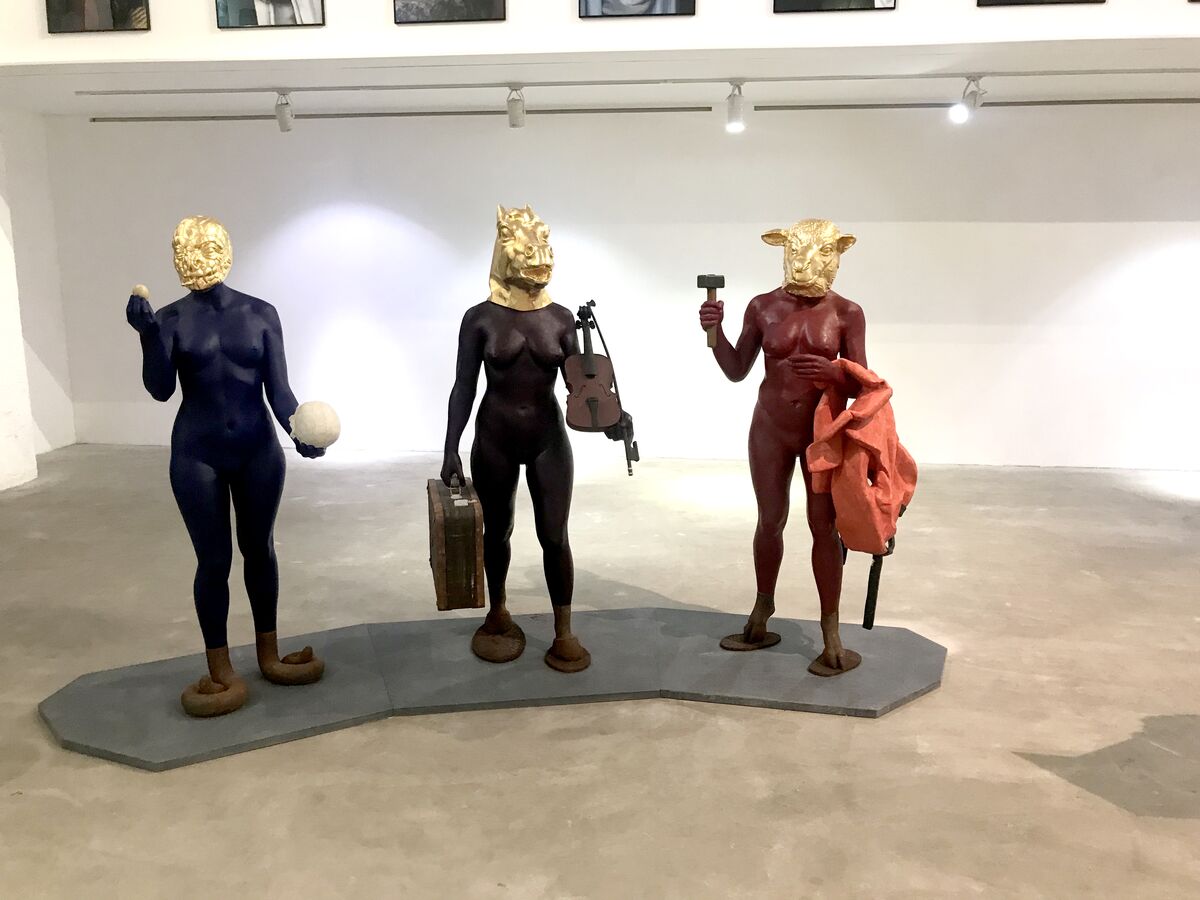Lost in Perception, Danish Cultural Center, Beijing, Kina
Art history is a source which belongs to us all. For as long as we can remember, the use of fragments and figures from the familiar realm and even from the entire known world has been an integral part of the artists' tool kit. The early European modernists deliberately appropriated other cultures; Picasso and the Cubists were inspired by African art, Van Gogh and the Impressionists by Japanese woodcuts, Matisse by Islamic art etc... In today's global art scene everyone seems to be inspired by everyone. For the most times, it is not a simulacrum. On the contrary, it's an illustration of the profound understanding of how important it is for our perception as human beings to share imaginary and concepts across cultures.
Since coming to Beijing 16 years ago, Bjørn Nørgaard has visited the Dongyue Temple on Chaowai several times. From day one, this Dao temple with its grotesque tableaux of spirits, demons, judges and various deceased persons awaiting their final verdict, reminded him of European medieval figurines of saints, angels, Virgin Mary and Christ, not seldom arranged in a similar vain. Still, how similar they seemed to appear in terms of formal representation and vocabulary, he soon realized that the images conveyed entirely different meanings. The many years in China have given him an insight into how much East and West share the same desires and hopes, yet also how radically different the traditions that shape us remain.
The centerpiece of this exhibition consists of twelve zodiac figures. Together and individually, they constitute an artistic, hybrid interpretation of the Dongyue characters into the modern realm. The resulting apparent chaos of imaginary and meanings is however not a collage of visual appearances locked into materiality. Nor does the autonomy of the individual elements succumb to the overall idea. Instead, the sculptures should be seen as an attempt to articulate a new alphabet of forms and shapes, consisting of both new and old, from which each of us can write our own sculptural sentences.
The choice of female characters is a tribute to Lao Zi: "In the world there is nothing more submissive and weak than water. But for attacking things that are firm and strong there is nothing that can take precedence of it".
Kilde: Danish Cultural Center
Bjørn Nørgaards tekstuddrag fra seminaret, som holdes i forlængelse af udstillingen
Lost in Perception, how to misunderstand each other in a friendly way, was the title for my exhibition in China. Mrs. Yin and Mr. Yang was standing as an entrance to the exhibition, after working in China since 2002, I have had a dialogue with Chinese friends, artist, scholars, students, craftsmen, engineers … this dialogue through 17 years has given me a great understanding of what we have in common as human beings in a global world, but also our very different cultural background. To have a dialogue that can cross our different philosophy and spiritual thinking means, that the mistakes that will naturally appear, is not meant unfriendly, it is that we have different syntaxes, so the idea behind Mrs. Yin and Mr. Yang is friendly mistakes as a condition for our mutual understanding, and in art a mistake can result in a masterpiece. In European sculptural tradition we called this kind of fig - ures allegorical, and they have always attributes, Mrs. Yin and Mr. Yangs attributes is Trigrams, Mrs. Yin K’un and K’an, Mr. Yang CH’ÍEN and LI, from that you can form for each figure two hexagrams Mrs. Yin PI and SHIH and Mr. Yang T’UNG JEN and TAYU. Sculptural tradition from Europe meets with Chinese spiritual tradition, in a friendly misunderstanding.
 Fra venstre Xia Dewu, Sculptor, lecturer at CAFA Department for Urban Art Lv Pinjing, Architect, Vice President of Central Academy of Fine Arts Anders Carsten Damsgaard, HE Ambassador of Denmark to China, BN, Lv Pinchang, Sculptor, Dean of CAFA Department of Sculpture, Tan Ping, Painter, Vice President of China National Academy of Art EM, Architect, Director of Danish Cultural Center, Wang Mojing, Architect, Director of Kragh & Berglund China, 8. juli 2019
Fra venstre Xia Dewu, Sculptor, lecturer at CAFA Department for Urban Art Lv Pinjing, Architect, Vice President of Central Academy of Fine Arts Anders Carsten Damsgaard, HE Ambassador of Denmark to China, BN, Lv Pinchang, Sculptor, Dean of CAFA Department of Sculpture, Tan Ping, Painter, Vice President of China National Academy of Art EM, Architect, Director of Danish Cultural Center, Wang Mojing, Architect, Director of Kragh & Berglund China, 8. juli 2019




